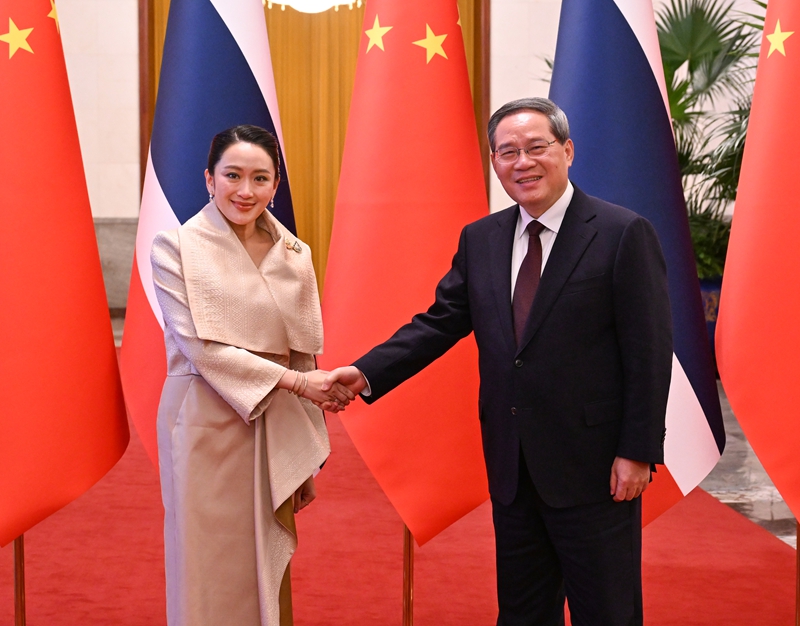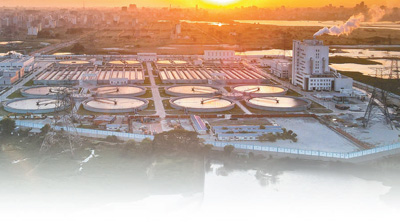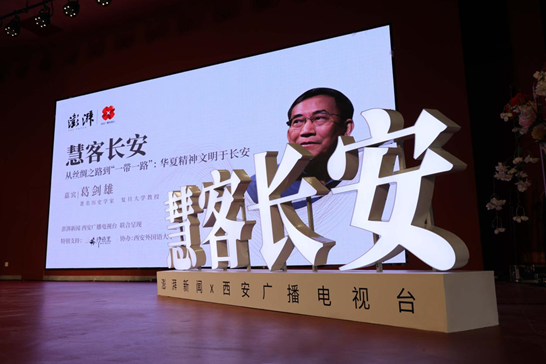Some Of The Eight "ministerial-level Units" Set Up By The State In Hong Kong Are Quite Low-key, And Many People Don't Know About It.
Some Of The Eight "ministerial-level Units" Set Up By The State In Hong Kong Are Quite Low-key, And Many People Don't Know About It.
This unit is the country's military force in Hong Kong and is at the ministerial level in terms of specifications because it is directly under the Central Military Commission. Simply put, it is the representative of the central government in Hong Kong, helping to communicate with the two places. For example, after the troops entered, Hong Kong's defense was stabilized; after the National Security Office was established
As we all know, after Hong Kong's return, the country's management method of Hong Kong was quite special under the framework of "one country, two systems", which not only gave Hong Kong a high degree of autonomy, but also ensured that national sovereignty was not lost. Having said that, the country has set up many institutions in Hong Kong, eight of which are high-standardly-level units. Some of these units can see the influence every day, while others are as low-key as background boards, which many people have never heard of.

What is a ministerial-level unit? Simply put, the administrative level is similar to that of the central ministries and commissions, and the ministerial level or vice ministerial level pays attention to the size of the official seal and the name of the organization. For example, the official seal at the ministerial level has a diameter of five centimeters and the vice ministerial level has a 4.5 centimeter difference, not to mention half a centimeter, the actual power and coordination ability are extremely different. These units are not set up casually. Each one is based on the specific situation in Hong Kong, helping to maintain safety and promote exchanges.

Let’s talk about the Chinese People’s Liberation Army’s troops stationed in Hong Kong first. This unit is the country's military force in Hong Kong and is at the ministerial level in terms of specifications because it is directly under the Central Military Commission. The establishment was in 1993, when Hong Kong's return was still under preparation, and the Guangzhou Military Region was responsible for selecting personnel and selecting elite troops from the army, navy and air force. The army part of the army was predecessor of the Red Regiment. It began with the Autumn Harvest Uprising in 1927 and experienced the Long March and various wars. ocean
The army has missile escort boats and other things, and the Air Force is also qualified and has supported missile satellite missions. On July 1, 1997, the troops officially entered Hong Kong to be responsible for defense. They do not interfere in Hong Kong affairs in normal times, but they must maintain national security and Hong Kong's stability at critical moments. Many people think this force is low-key because it does not appear frequently, but it symbolizes national sovereignty and Hong Kong's security cannot be separated from it.

Next is the Central People's Government's Office for safeguarding National Security in the Hong Kong Special Administrative Region, referred to as the National Security Office in Hong Kong. This was only established in 2020 and is at the vice minister level. The background is that the security situation in Hong Kong was complicated in those years, and the country wanted to strengthen maintenance, so it set up this institution. The Office mainly analyzes and judges the national security situation, guides Hong Kong to perform its security responsibilities, collects intelligence, and handles cases that endanger national security. After its establishment, the Office will be directly responsible to the central government and will not be affected by local interference from Hong Kong. The low-key thing is that it is not ostentatious, but its work covers all aspects of politics, economy and society. For example, intelligence collection requires focusing on potential risks every day to ensure that Hong Kong is not in chaos. Many people don’t know this unit because it is not as conspicuous as the army, but it is like a firewall that helps Hong Kong block security loopholes.

Let’s talk about the Liaison Office of the Central People’s Government in the Hong Kong Special Administrative Region and the Liaison Office of the Central Committee. This is the one with the highest status at the ministerial level. The former was Xinhua News Agency's Hong Kong Branch, which started operating in 1947 and was not renamed in 2000. If you have a wide range of responsibilities, contact the Hong Kong Office of the Ministry of Foreign Affairs and the Hong Kong troops stationed in Hong Kong to manage Chinese-funded institutions in Hong Kong, promote economic, education, science, technology, culture and sports exchanges in mainland Hong Kong, and also reflect the opinions of Hong Kong residents on the mainland. Simply put, it is the representative of the central government in Hong Kong, helping to communicate with the two places. Low-key? Something is because it does not directly manage the Hong Kong government, but it has great influence and it has to coordinate various cooperation projects. Hong Kong people have few opportunities to contact the Liaison Office of the Central People's Government, but mainland companies come to Hong Kong to invest and other things, so they cannot avoid it.

Then there is the Office of the Special Commissioner of the Ministry of Foreign Affairs of the People's Republic of China in the Hong Kong Special Administrative Region, at the vice-ministerial level. Established on July 1, 1997, synchronized with the return of Hong Kong. Hong Kong's diplomatic affairs are under the jurisdiction of the Central Committee, and this office is the executive agency, which handles consular protection, visas, etc., and also supervises Hong Kong's foreign exchanges. As an international city, the Office of Hong Kong ensures that everything is in the national interests. Many people ignore it because diplomacy does not make news every day, but it helps Hong Kong maintain its international status while maintaining the bottom line of sovereignty. Being low-key is being low-key, but you have to stand up at critical moments.
China Tourism Group Co., Ltd., a deputy ministerial-level central enterprise with headquarters in Hong Kong. The origin was the Hong Kong branch of the China Travel Agency founded by Chen Guangfu in 1928, and it was a private business at that time. During the Anti-Japanese period, the materials were transported, and after the founding of New China, it was converted to state-owned enterprises. It was reorganized in 2007, and its business includes travel and hotels. The group manages many subsidiaries, with a significant annual revenue, accounting for a share of Hong Kong's tourism industry. Why ministerial level? Because it is a large enterprise managed by the State-owned Assets Supervision and Administration Commission, it has a high strategic position. Many people don’t know its ministerial status because it seems to be a tourism company, but it promotes tourism exchanges in mainland Hong Kong and has a great economic impact.
China Resources Group, also a deputy ministerial-level central enterprise, is deeply rooted in Hong Kong. Originally, it was the Lianhexing in 1938, helping to fight against Japan and transport things, and later changed to China Resources. In 1952, it was under the jurisdiction of the Ministry of Trade. It now has a business that covers consumer energy real estate, including China Resources Power and China Resources Beer. There are many listed companies and total assets of hundreds of billions of yuan. Headquartered in Wan Chai, Hong Kong, it has tens of thousands of employees. The low-key thing is that it is not as high-profile as state-owned enterprises, but it penetrates daily life and China Resources products are everywhere in supermarkets. The group helps the country to make economic arrangements in Hong Kong and has a stable influence.
China Merchants Group Co., Ltd., a deputy ministerial-level central enterprise, has a larger scale and a total assets of over 10 trillion yuan. Founded in Shanghai in 1872, it is one of the earliest national enterprises in China. Hong Kong headquarters, business port shipping logistics finance and other things, ranking among the world's ports. He established China Merchants Bank in 1987 and is now a well-known bank. The group has invested heavily in Hong Kong and promoted the "Belt and Road Initiative". Many people think it is a company, but the ministerial specifications show that strategy is important, low-key operation but strong strength.

Finally, it is Bauhinia Culture Group Co., Ltd., which is the deputy ministerial level, established in 2019 with a headquarters spanning Shenzhen and Hong Kong. Its business is film and television media publishing, culture, tourism and finance, and holds Phoenix TV. Its United Publishing Group is a major publisher in Hong Kong, accounting for one-fifth of the annual publication of Hong Kong Chinese books. Integrate China Foreign Culture Group in 2021 and is stronger. Low-key because the cultural field is not so conspicuous, but it helps spread Chinese culture and promotes cultural exchanges in Hong Kong. Many people don’t know that it is a ministerial level, but it guards the cultural position.
These units have exactly eight, four main departments or directly under the Military Commission, and four deputy departments. Why so many? Because Hong Kong's situation is special, the country must control it from multiple perspectives. National defense has troops, security has the National Security Office, liaison has the Liaison Office, diplomacy has the Public Administration, and economic and cultural institutions. They do not interfere with Hong Kong's autonomy, but ensure national interests. The reason for being low-key is that you don’t want to be too ostentatious to avoid misunderstandings, but the actual effect should not be underestimated. For example, after the troops entered, Hong Kong's defense stabilized; after the establishment of the National Security Office, the security situation improved; the Liaison Office of the Central Committee promoted cooperation between the two places, and the economy benefited; the Office of the Public Security Bureau controlled diplomacy and maintained Hong Kong's international image; the tourism group helped the tourism industry recover; China Resources Investment and Merchants Bauhinia made efforts in economic and cultural development to help Hong Kong integrate into national development.

In general, these eight units each perform their own duties and fight together firmly. The troops are safe, the Office of the Public Security Bureau is in charge of intelligence, the Liaison Office of the Central Committee of the Communist Party of China connects the two places, the Public Security Bureau of the Foreign Affairs Office controls external affairs, and central enterprises promote economic and cultural development. Being low-key is a strategy, but the strength is there. Hong Kong's stability cannot be separated from them, and national reunification is also supported by them. To put it down to earth, just like the elders at home keeping their voices but always helping behind their backs, these units are the reliable backing of the country in Hong Kong.
These units not only cover Hong Kong, but also radiate to the surrounding areas. Like the Foreign Affairs Office helps the "Belt and Road" and central enterprises go global. As a bridgehead, these units help the country to make global layout. In short, although these eight units are low-key, their role is solid and worthy of attention.





